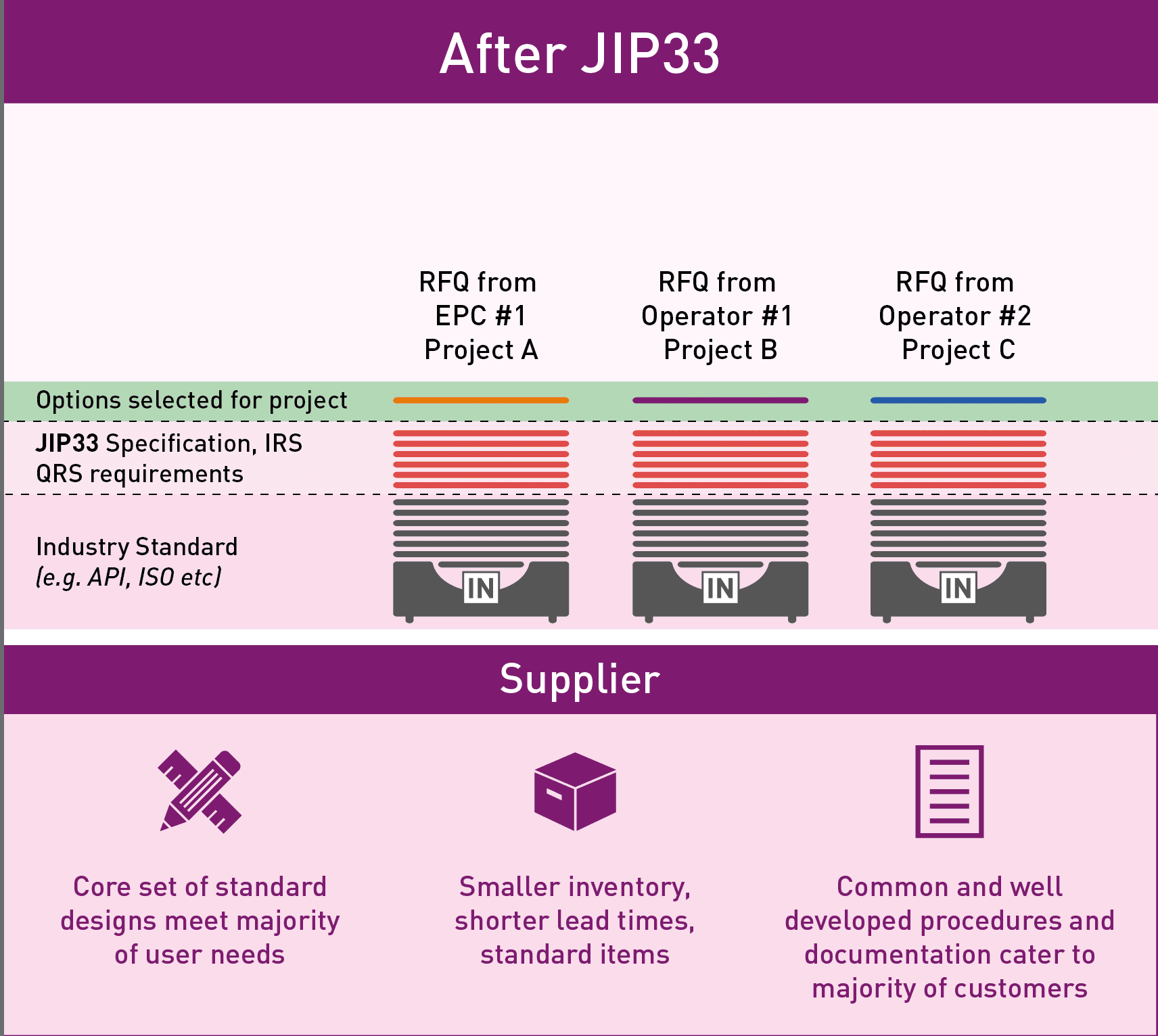Future fact or future fiction?
The document was an output from the Association’s Joint Industry Project 33: Standardising Procurement Specifications, the objective of which was to make a step-change improvement in the specification, procurement and delivery of equipment for the oil and gas industry through the use of standardised procurement specifications (see figure below).


The specifications are freely available to download to anyone via the JIP 33 specification library [1].
Of course, most oil and gas companies have developed their own specifications based on many years of experience of what works (and often what doesn’t!) and so this new document is intended to lay down a common framework, whilst allowing for preferred options from their own material specifications.
S-715 in more detail
The specification follows a common format of the JIP 33 equipment specifications and consists of 4 individual documents.
Supplementary specification to NORSOK M-501
As the title suggests this specification draws heavily on the current Edition 6 of NORSOK M-501 which has been the benchmark standard for coatings in the offshore space for many years. In fact the main document exists as a supplementary “overlay” to the NORSOK standard referring to specific paragraphs in that document and adding, removing, or expanding upon the text within it.
Whilst NOROSK M-501 is often perceived as an offshore specification the scope of the new document is extended to include coastal onshore facilities.
There are some significant changes to the NOROSK document, including;
- extension of System 1 to cover higher temperature systems,
- the new standard does not address passive fire protection.
- removal of systems 8 and 9,
- inclusion of a new system 10 to cover inert multi-polymeric matrix type coating materials.
Coating systems are described in the form of an annex which details each coating system type as well as requirements for dry film thickness, number of coats, pre-qualification testing, and inspection requirements. Prequalification requirements have been added to a number of systems where previously these did not exist within the base NORSOK document.
Selection of the relevant coating system for each use area is also described in a tabular format.
As well as the supplementary specification, three other documents are also included.
Quality requirements specification (S-715Q)
This document defines the quality management requirements for the supply of coating and painting. The document has a strong focus on traceability and conformity assessment.
Information Requirements (S-715L)
Supplied as an excel spreadsheet, this document outlines contract management, technical and purchase order, specific information deliverables. Technical information deliverables describe the requirements and timings for the supply of coating pre-qualification evidence, certificates of conformance, inspection reports and guarantee certificates, as well as coating procedure specifications and tests.
Data sheet (S-715D)
Another excel document which provides for the capture of design information for specific items (equipment, structures etc) and provides reference to the parent standard and supplementary specification where relevant. An open format supplementary sheet allows for specific items not covered in the main part of the data sheet. This can be used for detailing additional requirements for example.
Summary
Reference
Article reprinted from Corrosion Management, vol 158, November/December 2020, with permission






